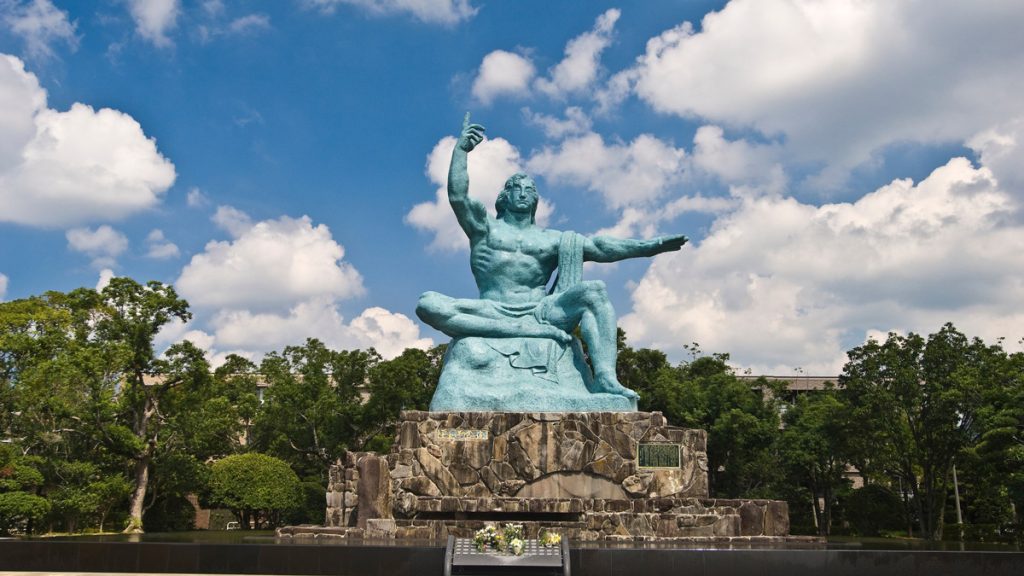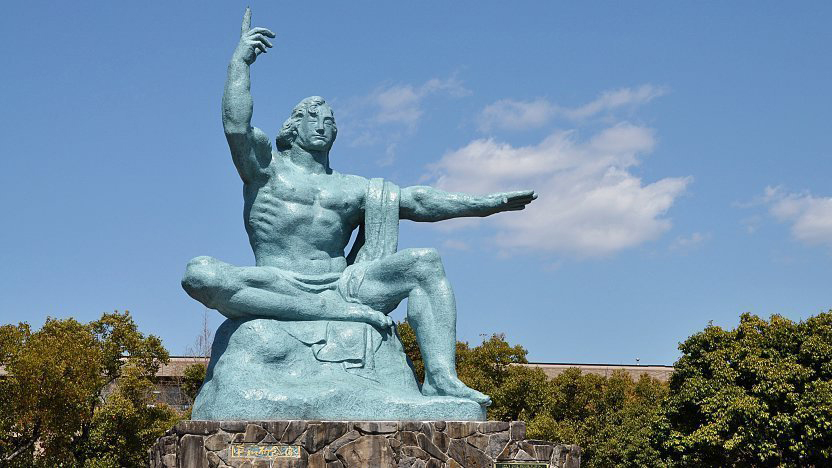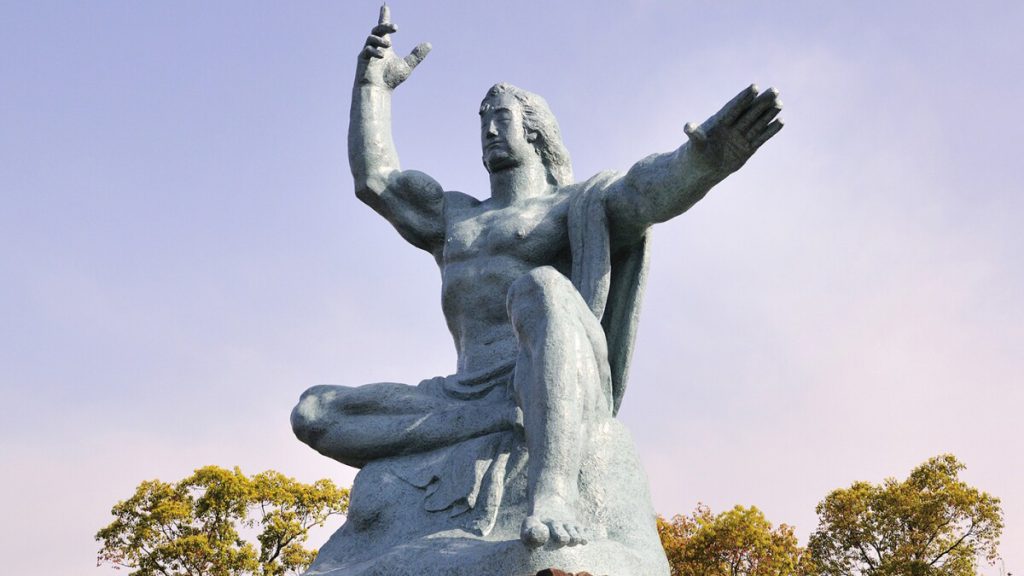Introduction

Many public sculptures are monuments to tragic events, paying tribute to the victims, and the nearly 32 foot tall Nagasaki Peace Statue is no exception. On the base of the statue, there is a black vault containing a list of the victims of the 1945 atomic bomb explosion. The statue was unveiled to the public on April 1, 1955, and every year, the city holds a commemorative ceremony at the foot of the statue. This article will provide an in-depth introduction to the history, symbolic significance, and special status of this statue in Nagasaki City.
The History of Statues
The history of the Nagasaki Peace Statue is rooted in the end of World War II, especially on August 9, 1945, when the United States dropped an atomic bomb and destroyed the city of Nagasaki. This disaster caused significant loss of life and lasting damage, making Nagasaki the first city in the world to be attacked by nuclear weapons. During the post-war reconstruction and healing process, Nagasaki City decided to create a statue to commemorate the victims of this incident and advocate for world peace.
The creation of the statue was carried out by Japanese sculptor Seib ō Kitamura) assumes that he himself is also a survivor of the Nagasaki atomic bomb. The creative inspiration of Yoshijima Miyoshi comes from his personal experience of the atomic bomb explosion and his profound contemplation of peace and anti war. His goal is to convey the message of peace and anti nuclear through sculpture, encouraging people to pursue world peace.
The appearance of the statue

The appearance of the Nagasaki Peace Statue has a unique aesthetic and symbolic significance. The statue is nearly 32 feet tall (approximately 9.8 meters) and presents the image of a naked male with arms extended into the sky, symbolizing hope and peace. The body lines of the statue are smooth and muscular, showcasing the artist’s profound understanding of the structure of the human body.
Above the head of the statue, there is a bright star representing peace and hope. The base of the statue is a black vault, which contains a list of the victims of the atomic bomb explosion at that time. This pedestal serves as a monument, allowing people to never forget that dark history.
Symbolism and Interpretation
The Nagasaki Peace Statue has profound symbolic significance, conveying multi-level information. Firstly, the statue itself is a symbol of peace and hope. The image of a naked man represents the fragility and strength of humanity, and his outstretched arm symbolizes the desire and pursuit of peace. Bright stars are a belief in the future, that peace is possible, despite so much pain and destruction in history.
Secondly, the vault on the base has a special commemorative significance. It contains the names of the victims, which is a direct commemoration of the victims and reminds people of the cost of life caused by the atomic bomb explosion. It is also a review of history, reminding people not to forget that moment to avoid similar tragedies from happening again.

Annual Memorial Ceremony in Nagasaki
The Nagasaki Peace Statue is not just a static sculpture, it also plays an important role in the city. On August 9th every year, Nagasaki City holds a commemorative ceremony at the foot of the statue to commemorate the victims of atomic bombs, express their pursuit of peace, and voice their opposition to nuclear weapons. This ceremony attracted people from all over the world to participate and became an international peace event.
The Symbol and Call for Peace
The Nagasaki Peace Statue is a symbol of peace, not only a tribute to the victims, but also a strong opposition to nuclear weapons. The city of Nagasaki is well aware of the terrifying power of nuclear weapons, so it has issued a strong call on the international stage, calling for a global ban on the proliferation of nuclear weapons to ensure a peaceful future.

Epilogue
The Nagasaki Peace Statue is a sculpture full of symbolic significance, symbolizing peace, hope, and opposition to nuclear weapons. It is a tribute to the victims of the atomic bomb explosion and a monument to remind the world not to forget history. The annual commemorative ceremony makes the statue a focal point of international peace activities, inspiring people’s pursuit of peace and vigilance against nuclear weapons. It is not only a statue, but also a belief in the future, a symbol of hope that peace will always accompany humanity.

